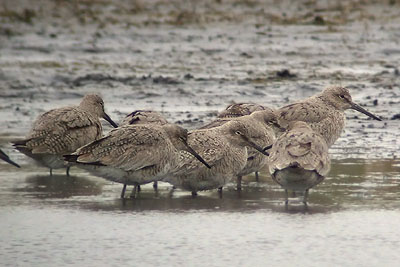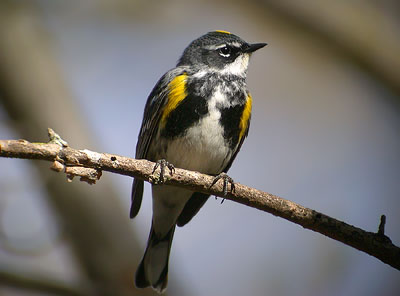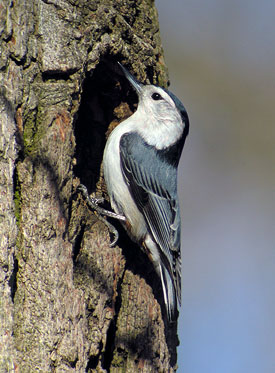 A message from Karen Etter Hale:International Migratory Bird Day
A message from Karen Etter Hale:International Migratory Bird Day (IMBD) is Saturday, May 13, this year; and the theme is
The Boreal Forest: Bird Nursery of the North.If you and/or your organization have planned an event, please consider posting it on the
official IMBD website so everyone learns about it. An additional reason for posting it is that I just sent a press release on behalf of the
Wisconsin Bird Conservation Inititative (WBCI) Outreach Committee to 34 reporters across the state directing them to the site. We plan to send a followup press release in late April.
Look under "Events and Festivals", then "Explorer's Map", where you can either see what's going on around Wisconsin (6 events are posted so far), or you can enter your event. The direct link to enter an event is
http://www.birdiq.com/journey/register_map.phpHere is the press release that went out this afternoon:
The Boreal Forest: Bird Nursery of the NorthInternational Migratory Bird Day, May 13, 2006The Boreal Forest: Bird Nursery of the North is the theme for this year’s International Migratory Bird Day (IMBD) Saturday, May 13. IMBD is an annual celebration of migratory birds: their beauty, amazing abilities, and the benefits they provide. Special events held around the country, including bird festivals, bird watching trips, and educational programs aim to increase awareness about the threats to birds and encourage bird conservation. IMBD is observed each year on the second Saturday in May to coincide with the return of spring migrants.
Each spring and fall, migratory birds make incredible journeys between their breeding grounds in North America and their wintering grounds in Mexico, Central, and South America. This year, IMBD celebrates the North American Boreal Forest, the largest remaining unspoiled forest left on the earth and the birthplace of billions of birds each year. The Boreal Forest Region of North America stretches across 3,500 miles from Alaska to the Atlantic Ocean.
The Boreal Forest ecosystem is a mosaic of habitats made up of forests, lakes, wetlands, rivers and tundra. It is critical to the survival of nearly half of all North American species, which return each year to the forest to breed. At least 20 percent of birds at North American birdfeeders in winter have returned after a summer in the Boreal Forest.Threats to the North American Boreal Forest include forestry, mining, and agriculture. Currently, much of the boreal is untouched by development, but one-third of the region has already been set aside for industrial use.
Many of the birds we see in our Wisconsin yards and enjoy in our parks and refuges use the Boreal Forest Region to hatch and raise their young. Some examples of Boreal birds include Dark-eyed Junco, Pine Siskin, White-throated Sparrow, Great Gray Owl, Boreal Owl, Golden and Ruby-crowned Kinglets, Olive-sided Flycatcher, Gray Jay, Boreal Chickadee and Lesser Yellowlegs. There are also several warbler species that breed in the Boreal Forest, such as Nashville, Tennessee, Blackburnian, Bay-breasted, Black-throated Green, Cape May, Magnolia, and Yellow-rumped warbler. The endangered Whooping Crane, a species recently reintroduced to WI, is also a boreal bird.
IMBD - Let’s celebrate! Each year, hundreds of thousands of people gather at community centers, schools, parks, nature centers, and refuges across the country to learn more about birds, take actions to conserve birds and their habitats, and to have fun! The IMBD website (
http://www.birdday.org/) contains an interactive map where you can look for IMBD events in your area. The website also contains additional
information and educational materials on IMBD, and an invitation to post your organization’s event information on their site. For more information on the Boreal Forest, please visit the Boreal Songbird
Initiative website (
http://www.borealbirds.org/).
So, gather up the family and plan an outing to celebrate International Migratory Bird Day. Here are some ways you can celebrate birds year-round!
- Take notice of the birds around you and share your knowledge, especially with kids.
- Create or improve habitat at home or school
- Build and maintain a bird feeder or bird house
- Keep your cat indoors - helps cat and birds!
- Reduce the use of pesticides in your yard and garden
- Drink bird-friendly, shade-grown coffee
- Buy a Duck Stamp!
- Lead or attend a bird watching walk
- Write a related article for a local paper
- Participate in a bird count or study
- Create an IMBD display for a school or library
- Attend or host an IMBD festival
Karen Etter Hale
Chair, Wisconsin Bird Conservation Initiative
Executive Secretary, Madison Audubon Society
222 S Hamilton St, Suite 1
Madison, WI 53703-3201
608/255-BIRD (2473)
608/255-2489 fax
masoffice@mailbag.comhttp://madisonaudubon.orgEagle Optics is a proud
program sponsor of International Migratory Bird Day.
Blackburnian Warbler image © 2006 Michael McDowell































































